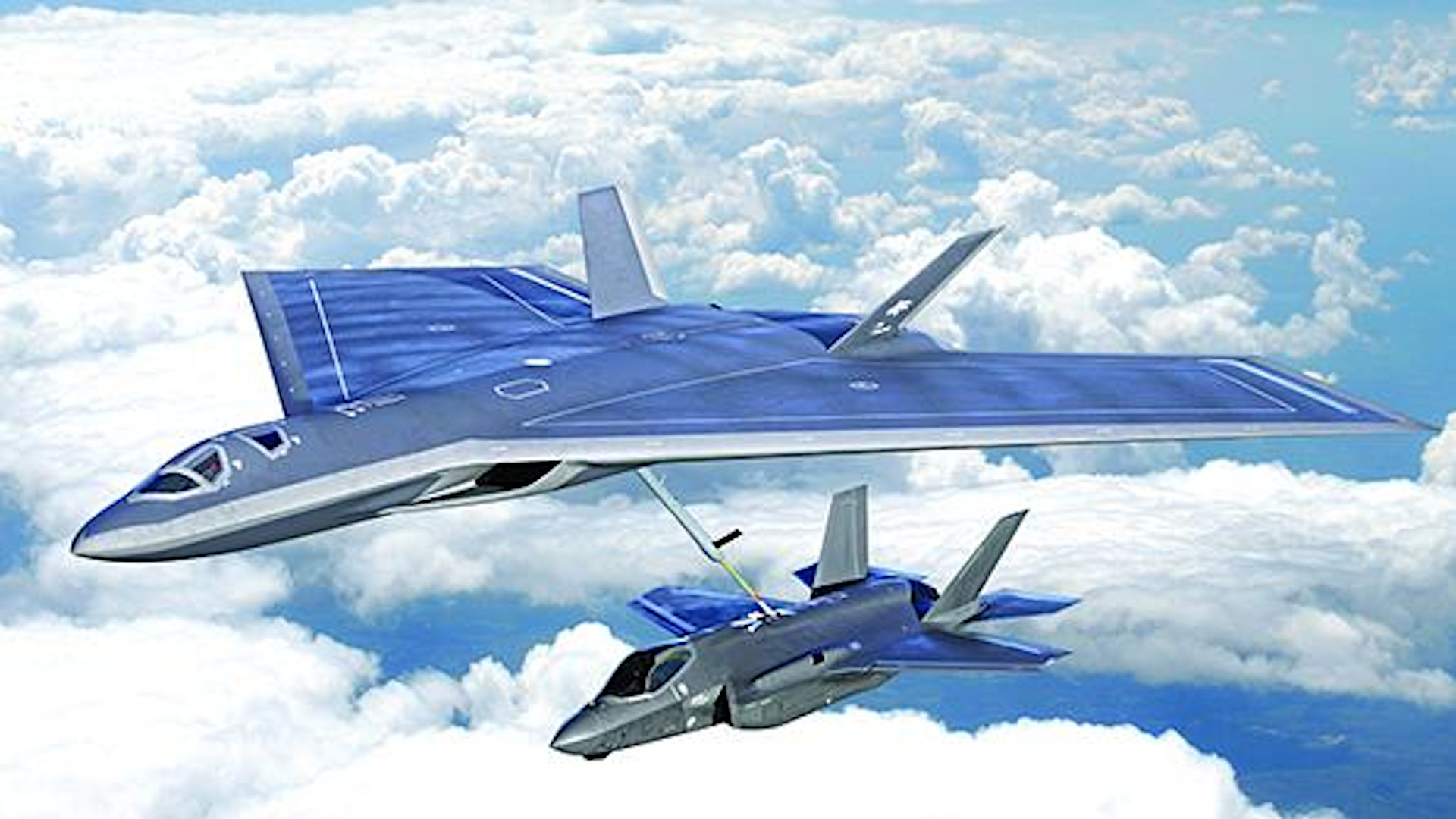Lockheed Martin’s Skunk Works has released a new rendering of a stealthy aerial refueling tanker. The U.S. Air Force says it needs more survivable tankers no later than 2040, but serious questions about those plans are growing amid budgetary uncertainty. There need for stealthy aerial refuelers is an increasingly critical imperative, especially in the context of a potential future high-end conflict, such as one in the Pacific against China. The War Zone made a detailed case for just such a system seven years ago.
Aviation Week first published the Skunk Works advanced tanker rendering seen at the top of this story, which depicts it refueling a stealthy F-35 Joint Strike Fighter, earlier today. The War Zone has reached out to Lockheed Martin for more information, including whether this reflects a design being proposed and/or developed in response to requirements for what the Air Force is currently calling the Next Generation Air-Refueling System (NGAS).
NGAS is a reflection of the reality that existing tankers will already face serious challenges surviving in an anti-access and aerial denial environment in any future major fight. At the same time, aerial refueling will be essential in those same conflicts for supporting a tactical air force that is not built for fighting without close proximity to aerial refueling even over short distances measured in hundreds of miles. So, in a fight in the Pacific against China, the Air Force’s tactical fighter combat mass could be neutered if the tankers cannot operate close enough to put those combat jets into effective range of their targets or get them to combat air patrol areas.
It is important to note that NGAS is envisioned as a family of systems, of which a stealthy tanker is only expected to be one component. The Air Force currently operates KC-46, KC-135, and KC-10 tankers, and is looking to divest the latter type entirely by the end of this year. The size of the aging KC-135 fleet is also set to shrink. We will come back to the Air Force’s overall future tanker force plans later on.
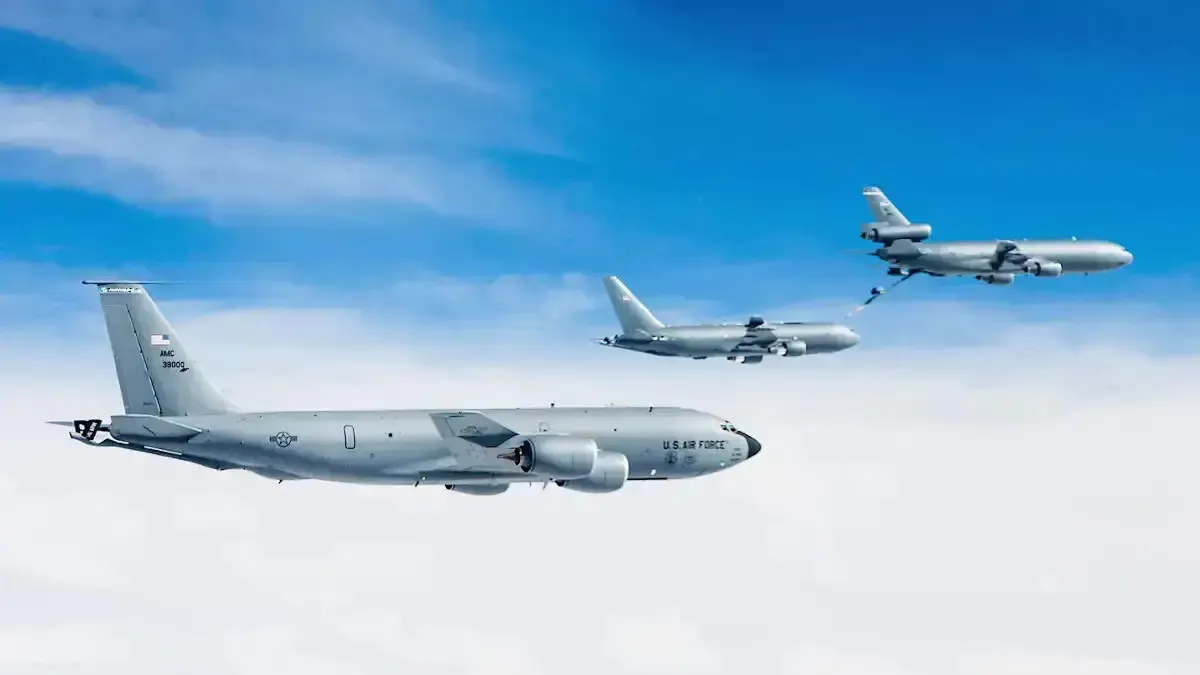
The rendering of Skunk Works’ new stealthy tanker concept shows a design with a very broad planform with large clipped wings that have some lambda-wing attributes. A narrow forward fuselage section protrudes at the front and relatively small twin outwardly-canted vertical tails can be seen. The large broad wings would contain a large amount of fuel to support the aerial refueling mission.
A closely blended and swept engine air intake is visible underneath where the left wing joins the design’s center fuselage. Stealthy designs typically have their engines deeply buried inside the main fuselage, with air being fed from the intake via serpentine ducts, to help keep their radar signature at a minimum, especially from the critical forward viewing aspect.

The aircraft also sports a well-defined chine-line that wraps around the forward part of the aircraft and blends with the wings, with the trapezoidal upper and lower fuselage meeting at its apex — another stealthy characteristic. A large two (or possibly three) piece windscreen is seen for the forward cockpit and another overhead conformal canopy is seen for a rear cockpit. Together with what can seen of the width of the fuselage as compared to the F-35 below, this indicates the aircraft would have a crew of two. It is possible that two individuals could be seated side-by-side in the front and rear cockpits, but this seems unlikely based on the scale we are seeing in the rendering.

A two-person crew would be a major departure from past tankers which have all been dual piloted with an additional boom operator and sometimes other personnel. Although, the USAF is actively experimenting with single pilot tanker operations today, which this feature may be inspired by.
Among the most interesting features depicted in Skunk Works’ new tanker rendering is what looks to be a centrally mounted aerial refueling boom under the main fuselage. All boom-equipped aircraft built to date, at least that we know of, have had this system installed under the tail. The new boom location makes sense in this case given that it would be highly desirable for it to be stowable internally, or at least very flush to the underside of the fuselage, when not in use to keep the tanker as stealthy as possible. How the boom is positioned in this particular instance could also be, in part, a byproduct of the very fighter-esque engine exhaust arrangement at the rear.

The boom is the Air Force’s preferred refueling method. To a more limited extent, the service, along with the U.S. Army, also uses the probe-and-drogue method to refuel helicopters in flight. Probe-and-drogue is the default refueling method for the U.S. Navy and the U.S. Marine Corps for both fixed-wing aircraft and helicopters in flight. The Navy’s P-8 does use the boom method though. This stealthy tanker concept could feature a basket as well, just as the KC-46, KC-10, and some KC-135s do, but it just isn’t visible in this rendering. The design also has its own aerial refueling receptacle on top of the fuselage.
Overall, this appears to be a low observable design, but not a very low observable one, which is exactly what we would expect from a stealthy tanker. These aircraft would not be tasked with penetrating deeply into highly contested airspace, but would work along the outer fringes of it, enabling even more survivable assets to push forward. Low-altitude refueling operations could buy them additional survivability at distance from high-threat areas.
From their forward position, an aircraft primarily configured as a stealthy tanker could execute other roles, as well. This could include acting as a standoff electronic warfare and networking platform, or even one capable of launching its own weapons and drones. In other words, it would not be unexpected to see an aircraft like this, which won’t come cheap, procured for more than just tanking. Even the USAF’s existing tanker fleet is taking on new roles that are untraditional for aerial refueler types. These include launching and controlling drones, including those potentially tasked to defend the tanker themselves.
The tanker design seen in the new Skunk Works rendering notably differs from the blended wing body advanced tanker/cargo aircraft concepts Lockheed Martin has shown publicly in the past. Those proposals date back, at least in part, to the late 2000s-early 2010s and the Air Force’s Speed Agile program, which was centered on the idea of a multi-mission aircraft four-engine aircraft capable of flying at high speeds and operating from short airfields in remote and austere locations. The company pitched similar-looking design concepts in the latter half of the 2010s as potential options for meeting the Air Force’s future tanker needs as part of what was then referred to as KC-Z. The current NGAS effort evolved from KC-Z.



Boeing, which was also involved in Speed Agile, has proposed various blended-wing tanker/airlifter designs in the past decade or so. In August 2023, the Air Force awarded a contract to JetZero to design and build a highly efficient blended wing body demonstrator, which the service has indicated could feed into the NGAS and Next-Generation Airlift (NGAL) programs.
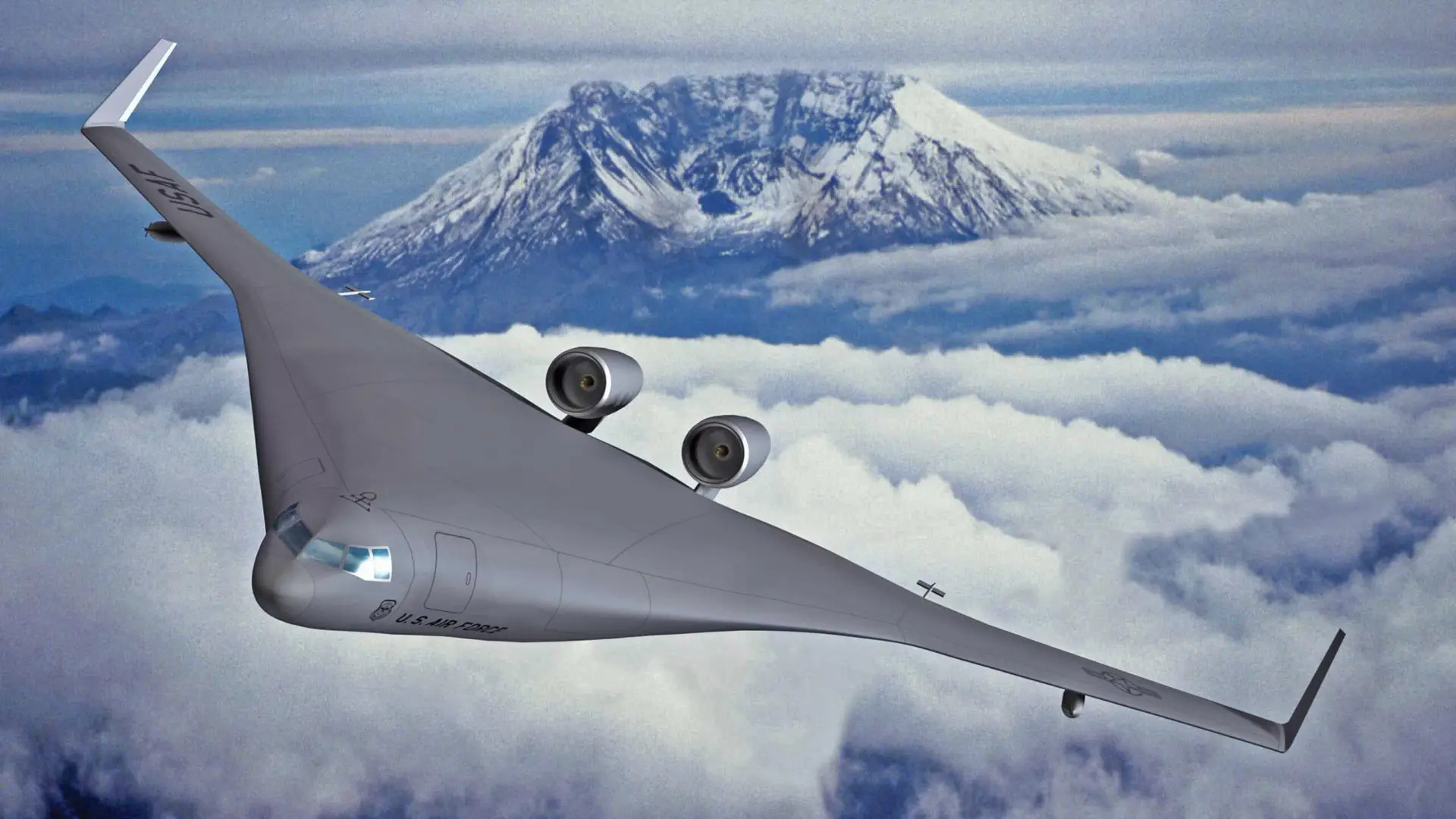
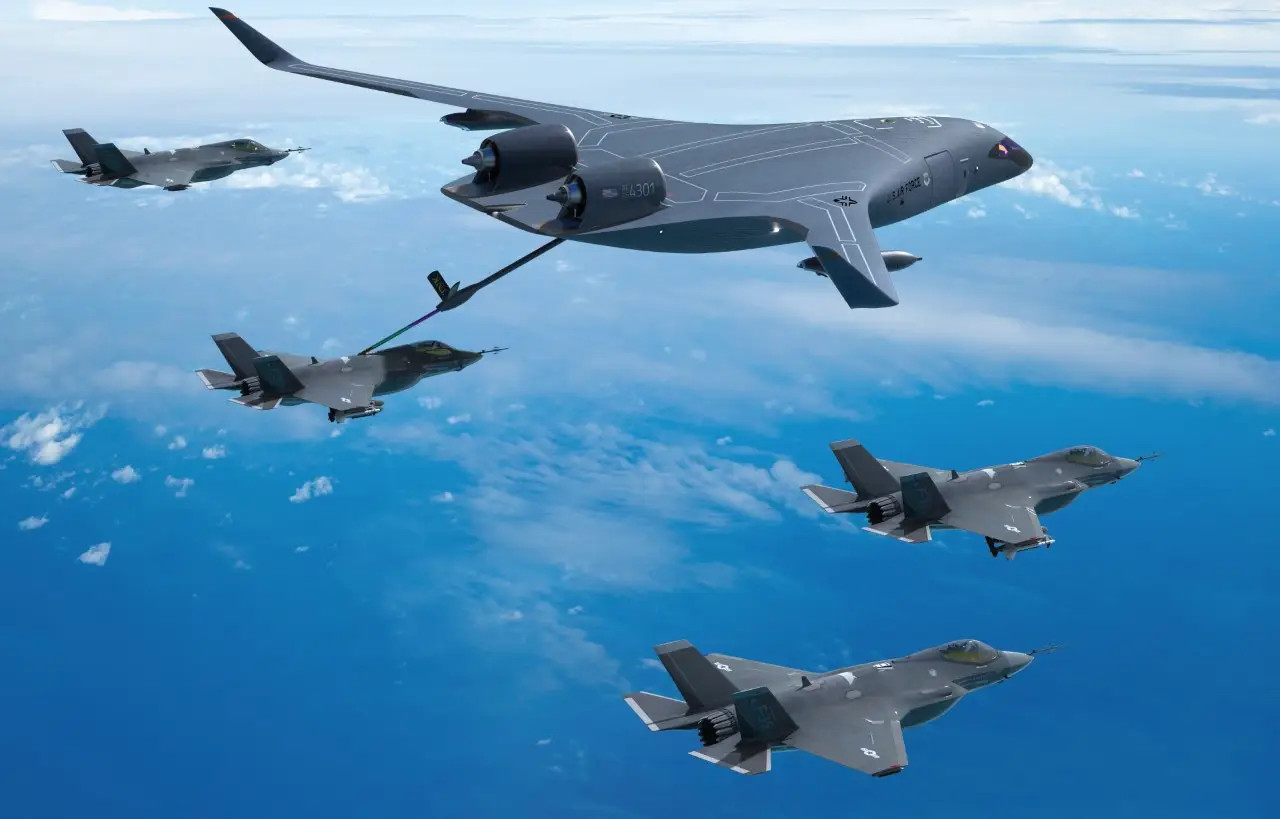
The new rendering from Skunk Works has a general look that feels more in line with a bomber or even an oversized tactical jet, especially in the shape and configuration of its cockpit section, rather than a traditional tanker. With this in mind, it’s interesting to note here that the Air Force did previously explore the idea of a tanker based on the B-2 Spirit stealth bomber. The War Zone has also pointed out the potential for using the new B-21 Raider as the basis for a new stealth tanker in the past.
This is all in line with the growing expectation that the Air Force’s future tanker fleets, or at least a portion of them, will look dramatically different than they do now.
“Traditionally, we could take a commercial derivative aircraft, turn it into a tanker or a transport,” Secretary of the Air Force Frank Kendall said during an online talk the Council on Foreign Relations (CFR) think tank hosted in January 2023. “[But] they’re not designed with a high premium on—or a high set of requirements for survivability, for resilience.”
“The threat’s taking that freedom [of design] away from us,” Kendall continued. “We’re considering the current tanker modernization, which is basically recapitalization. But I think we’re going to have to move beyond that to the next generation and it’s going to have to survive in an environment that the current fleet hasn’t had to worry about.”
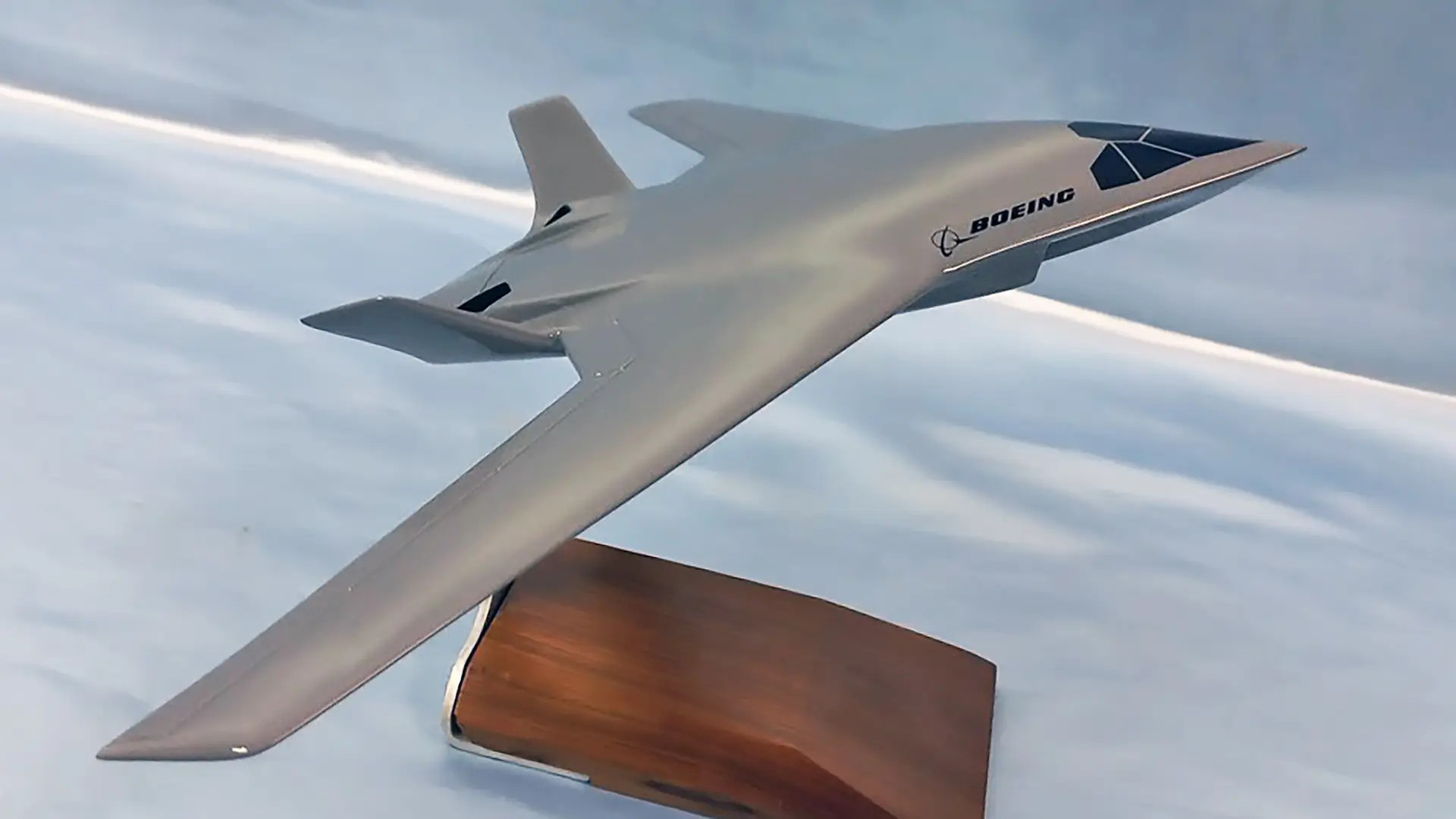
At the same time, the costs and complexities that are expected to be associated with future stealth tankers mean that it won’t be economical for those aircraft to be the primary aerial refueling options available to the Air Force.
The Air Force’s future fleet of tankers capable of operating in “extreme threat” environments will “have exquisite capabilities” and will also be “probably very small” to avoid “bankrupting” the service, Gen. Mike Minihan, head of Air Mobility Command (AMC), told The War Zone and other outlets at a roundtable on the sidelines of the annual Air & Space Forces Association Warfare Symposium in February. AMC oversees the vast majority of the Air Force’s current tanker fleet.
“I’m not looking to develop a fleet that has to handle every threat environment. There is an enormous amount of that NGAS … fleet that’s going to look a lot like the airplanes we have today, okay, that can operate at the permissive environment and semi-permissive,” Minihan added at the roundtable earlier this year. “And then there’s going to be a portion of the fleet that can get into … the high-end of semi[-permissive environments] and into the extreme threat areas.”
The Air Force is separately looking at adding a host of new and improved capabilities to its existing KC-46 and KC-135 tankers, including ones that could increase their utility outside of the aerial refueling role. Acting as communications gateway nodes or even motherships for drone swarms could be in their future.

There has been work done on podded refueling booms that could turn various current and future aircraft, including uncrewed types, into impromptu tankers as required, as well. Broadly similar ‘buddy refueling’ capabilities involving probe-and-drogue pods have been in use for decades, including with the U.S. Navy and Marine Corps. The Navy is already working toward fielding carrier-capable MQ-25 Stingray tanker drones that will carry underwing probe-and-drogue refueling pods.

As already noted, the Air Force has said in the past that it hopes to begin fielding elements of NGAS no later than 2040, and hopefully well before then. The service is hoping to complete an initial analysis and review of its core requirements and the options available by the end of this year. A formal solicitation for proposed future tanker designs could come in the 2025 Fiscal Year.
At the same time, there have been and continue to be questions about the Air Force’s actual future tank plans and how it will fund those ambitions, especially in light of new defense spending caps. The Air Force requested just shy of $8 million for NGAS-related activities in the 2024 Fiscal Year budget proposal, which it expects to pay for the aforementioned initial analysis and review. The service did not ask explicitly for any funding to support NGAS in Fiscal Year 2025.
“There . . . will likely have to be some commitment beyond the Air Force to get the kind of development money and procurement [funding] that it takes to actually make that payment,” Air Force Lt. Gen. Richard Moore, Deputy Chief of Staff for Plans and Programs, said at the Aerial Refueling Systems Advisory Group annual symposium earlier this year, according to Aviation Week. “But until we know what the options are, we don’t even have an idea what that looks like.”
The Air Force’s future tanker plans have already been in significant flux in recent years. The service is currently expected to buy 179 KC-46As under current contracts, which is not nearly enough for a one-for-one replacement of older KC-10s and KC-135s. In 2021, the Air Force announced plans for a “bridge tanker” competition to acquire between 140 and 160 more traditional aerial refueling aircraft, which wouldn’t necessarily be more KC-46s, while it refined its requirements for a more advanced future tanker design.
The Air Force has since truncated those interim plans and now only expects to buy around 75 additional traditional tankers. The service has also been openly talking about simply awarding a new sole-source deal to Boeing for more KC-46s. This is despite the fact that the KC-46s continue to be plagued by significant technical issues that are still not expected to be fully resolved for years.

Lockheed Martin had notably partnered with Airbus to propose an Americanized derivative of the Airbus 330 Multi-Role Tanker Transport (MRTT) dubbed the LMXT for the bridge tanker competition, but has since abandoned that pitch. Airbus subsequently said it was continuing on its own with this offering. There have already been several failed bids for Air Force tanker contracts involving versions of the A330 MRTT over the past two decades or so, as you can read more about here.
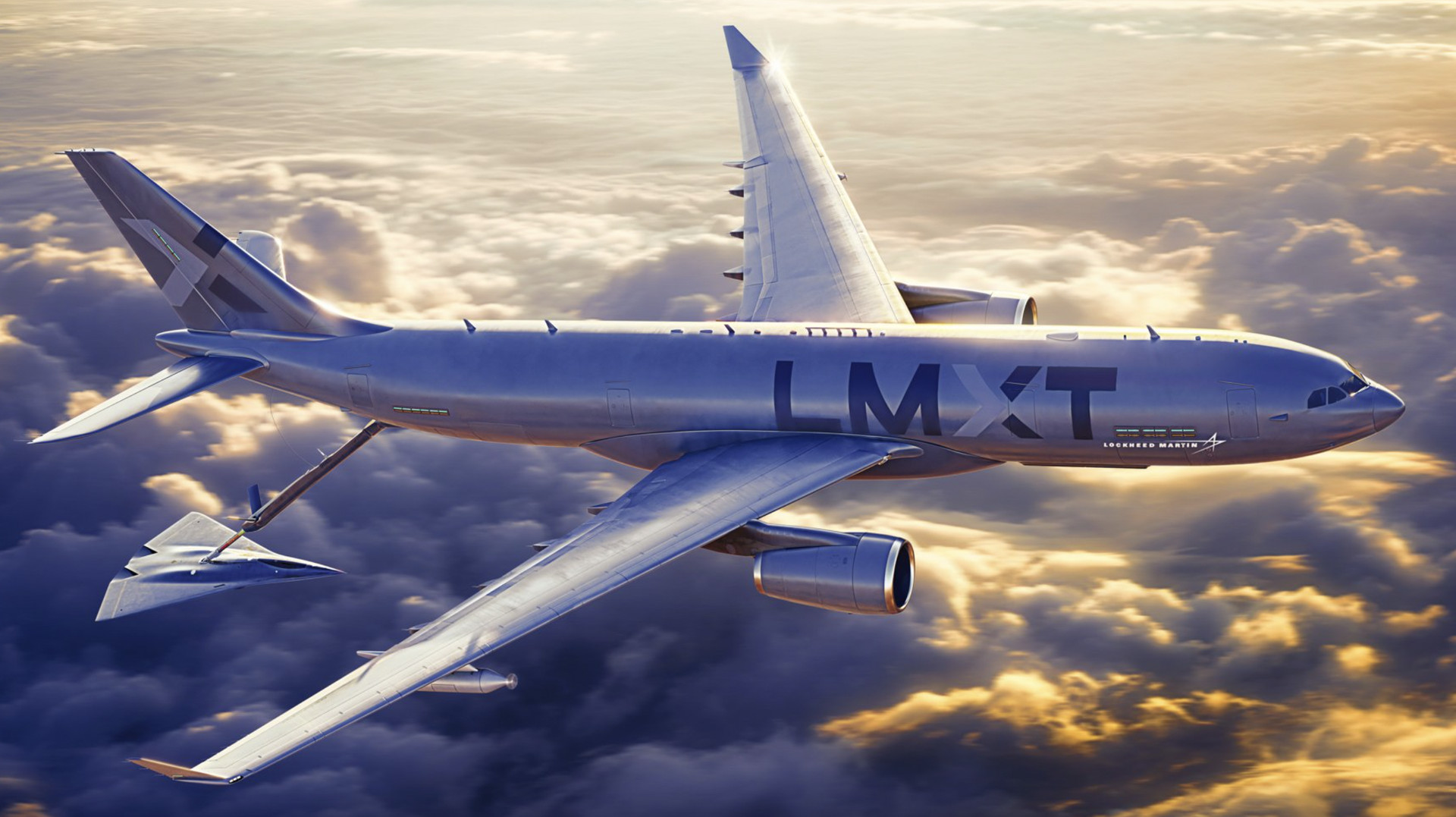
The newest stealth tanker rendering from Skunk Works certainly reflects the Air Force’s stated intention to move beyond traditional tankers like the KC-46 or the A330 MRTT, at least in part, in the future. At the same time, it remains to be seen exactly how and when the service’s plans to acquire survivable aerial refueling aircraft and other elements of the NGAS family systems may truly come to fruition.
Contact the author: joe@twz.com
